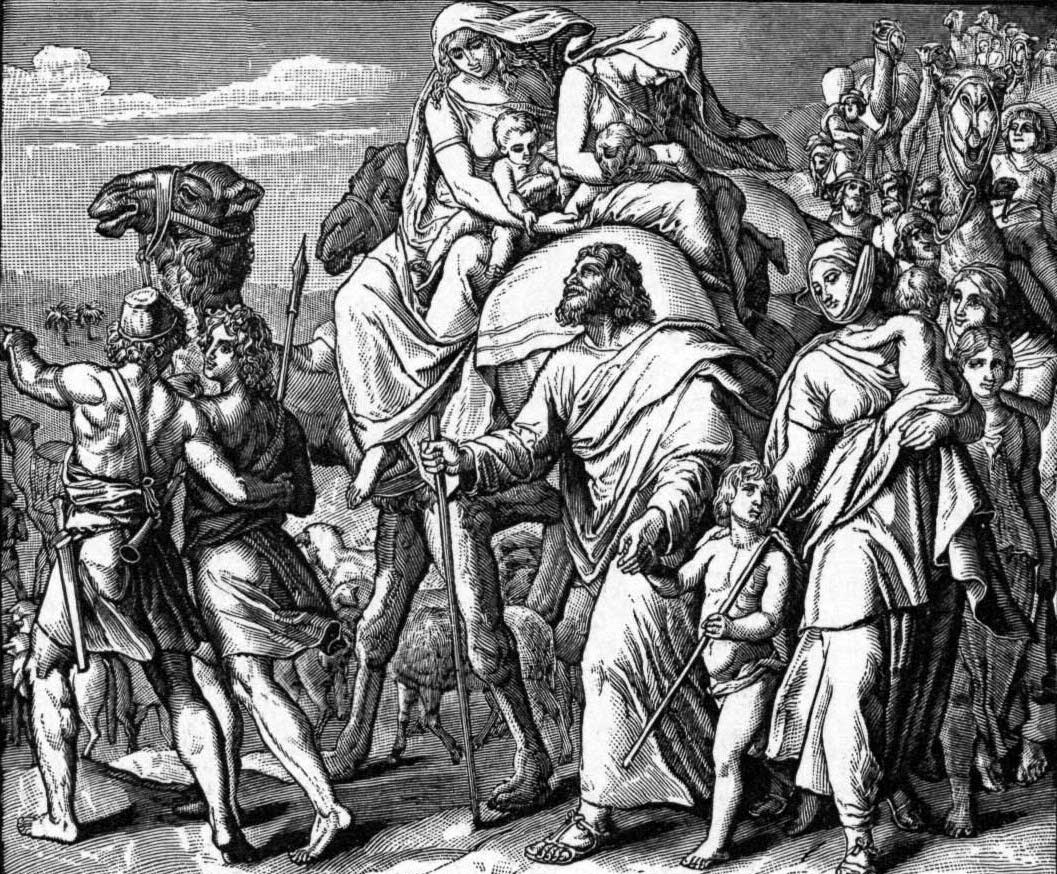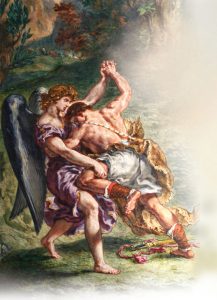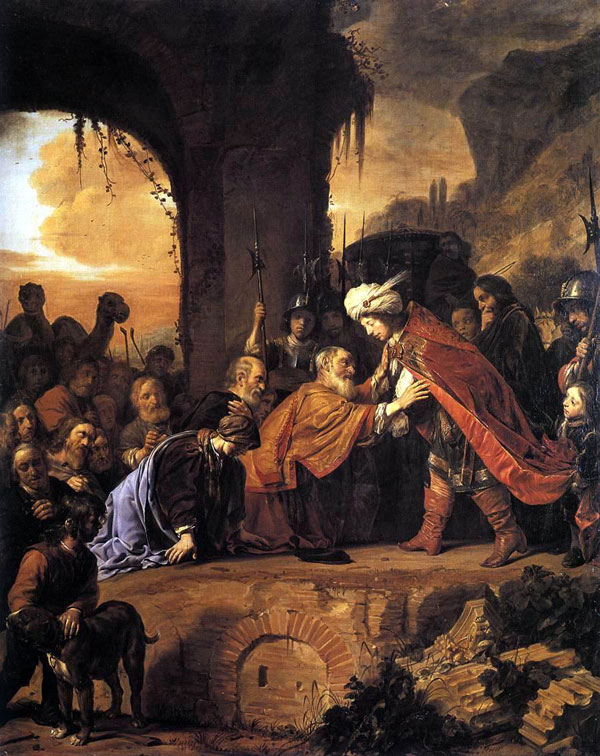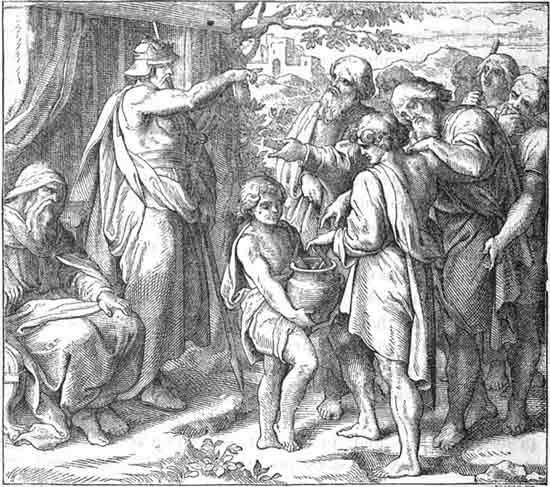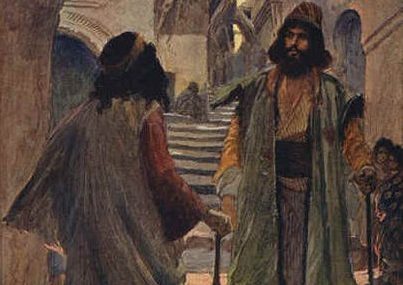
The first Jewish-Roman War began in 66 AD but its seeds were sown back in the year 6 AD. The oppression and the corruption by the local Roman officials and the policy of hindering the Jewish religious principles and tenets adopted by the Roman rulers were fomenting discontent among the Jews by every passing day.
The leaders who had taken over the charge of the Jewish revolt from ‘Judas of Gamla’ had kept the flame of nationalism and self-determination burning in the Jews.
This went on for years. In the meantime, Augustus, the first Emperor of the Roman Empire who died in 14 AD was followed by four successors – Tiberius, Caligula, Claudius and Nero, one after the other in relatively short time. They too had more or less adopted a policy of hatred towards the Jews.
A short period of four years from 41 to 44 AD went well and is considered to be a stable time for the Jews. During this interval, grandson of King Herod – ‘Agrippa I’ became the king of Judea with the virtue of his cordial relations with Claudius. Agrippa was Herod’s grandson. Herod had murdered his two sons including Aristobulus IV, who was Agrippa’s father, just over a small doubt that they were plotting against him.
Though not Jewish by birth, Agrippa was in sympathy with the Jews. He not only gave them the freedom to follow their religious principles and tenets but being the king of the Jews, he himself too strictly adhered to them. His reign saw Jews prosper and enjoy stability.
However, after the mysterious death of Agrippa in 44 AD, the then Roman Emperor once again appointed a Procurator for Judea citing the young age of Agrippa’s son and the conditions once again started to worsen for the Jews. All the Roman procurators who then followed were worse than their predecessors – they were more corrupt and more inhumane!
It was in 64 AD that a procurator named Florus, surpassed them all in misdeeds. He began inciting the Jews right from the time when he took over the authority of Judea. He would await an opportunity for the anger of the Jews to flare up against some unjust law. And then even a minor case of violence would see Florus inflict appalling atrocities on the Jews using the incident as a pretext. With passing of just two years, the Israelites could take it no more and began to oppose the Roman Empire at several places. In 66 AD, the then Roman Emperor Nero, sent his commander Vespasian to crush the revolt and this was the flashpoint of the First Jewish-Roman War.

At the start of the war, the Jews appeared to get an upper hand at various places but soon began to lose this advantage. They neither had professional military training nor discipline, nor formidable weapons, nor strong leadership.
Moreover, the Jews did not face the Roman onslaught as a unified opposition. They were divided into different sects. Of these, the ‘Sadducees’ who were rich and mainly belonged to the upper echelons of the society, were in favour of the Jews being part of the Roman Empire as most of them had grown rich with the benefits they had managed to extract by being in good books of the Roman Empire and its officials. Hence an end of the Roman rule was not quite to their advantage. The other group, the ‘Pharisees’, the average middle-class among the Jews with a moderate approach wanted to abolish the Roman rule. Though they wanted independence for the Jews, they were aware that they lacked the necessary muscle-power to take on the Roman Empire. Hence, rather than having to sacrifice their lives for lack of adequate strength, they were in favour of taking a stepwise approach, i.e. to initially win religious liberty, and then follow it up with a struggle for political freedom. The third group, the ‘Zealots’, believed in winning independence for the Jews from the Romans under any circumstances and at any cost. Thus it was natural for the Sadducees to nurse a grudge against the Zealots and this subsequently led to clashes among them even as the Romans continued with their offensive. The Roman army benefitted from the divide.
In the meantime, Roman Emperor Nero died in the year 68 AD. Nero had neither left behind a successor nor appointed anyone to succeed him. Thus the Roman Empire was undoubtedly headed for a power tussle. Aware of these facts, Roman commander Vespasian, who was then on the conquest of Jerusalem, immediately handed over the leadership of the campaign to his son Titus and left for the Roman capital.
And, Vespasian’s assessment of the situation indeed came true. The single year of 69 AD saw four emperors, one after the other – Galba, Otho, Vitellius and Vespasian, out of whom the reign of the first three did not last long. Again, out of the three two had ascended the throne by slaying their predecessor while one of them had committed suicide. The fourth emperor was Vespasian himself. Taking advantage of the chaos resulting from the power struggle, he too had killed his predecessor and had taken over the reins of the Roman Empire in his hands. With him began the era of the rule of the ‘Flavian’ dynasty over the Roman Empire.
In the meantime, Vespasian’s son, Titus had laid siege to Jerusalem and had begun to cut supply lines of the Jews one after the other.

Finally in 70 AD, after a siege of many months, the Roman army was able to breach the strong fortification of Jerusalem and enter the city. The invading Roman army caused unprecedented plunder, arson in the city, and mercilessly massacred the Jews at sight. Thousands of Jews were butchered and about a hundred thousand of them were captured and sent across the Roman Empire as slaves.
The Roman army entered the Holy Temple within no time, quashed the bitter Jewish resistance, looted the temple and almost completely razed it to the ground. Only the ‘Western Wall’ withstood the destruction to a certain extent. The remaining part of the Wall still exists and in revered by millions of Jews.
The First Holy Temple built by King Solomon (‘Solomon’s Temple’) was destroyed by the Babylonians in the sixth century BC. And now, the ‘Second Holy Temple’ that replaced the first, that was built with the help of Persian Emperor Cyrus in 517-16 BC and was further expanded by King Herod, was also destroyed.
The destruction of the Second Holy Temple in such a manner is a raw bleeding wound in the hearts of the Jews for about the last two thousand years and they are awaiting the building of the Third Holy Temple.
(It is said that the Jewish religious texts do prophesize the period when ‘Third Holy Temple’ will be built. These texts also mention the signs which will manifest when the time for the construction of the Third Temple will near. One of these signs is about the birth of an apparently completely red heifer (calf). Of course, along with being completely red, the heifer is required to meet a number of other criteria or requirements as well. News about the birth of such a heifer in Israel recently, has created a sensation across the world. Elaborate studies and examinations of the calf are being conducted in Israel to determine whether the heifer signs align with those mentioned in the Jewish prophecy. The Jews religious text says that the birth of such a baby cow foreshadows the construction of the Third Temple.)(To be continued…)





